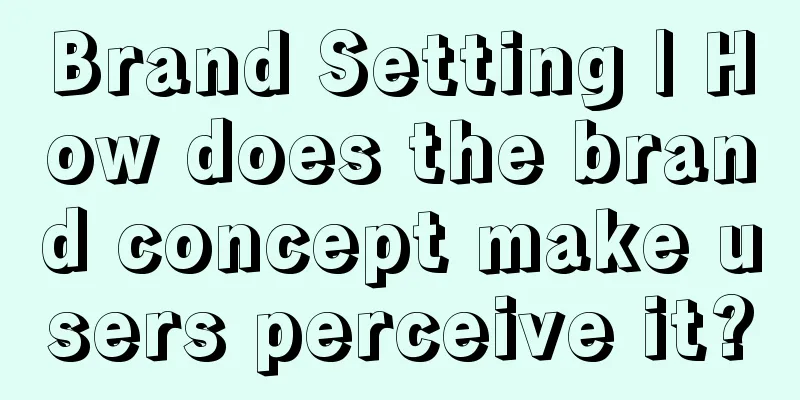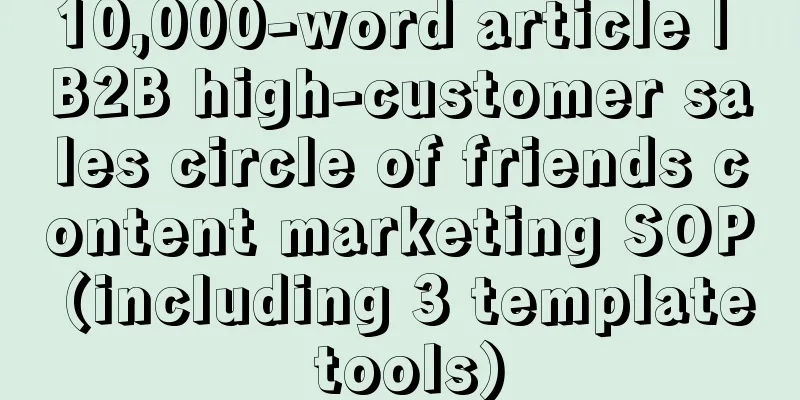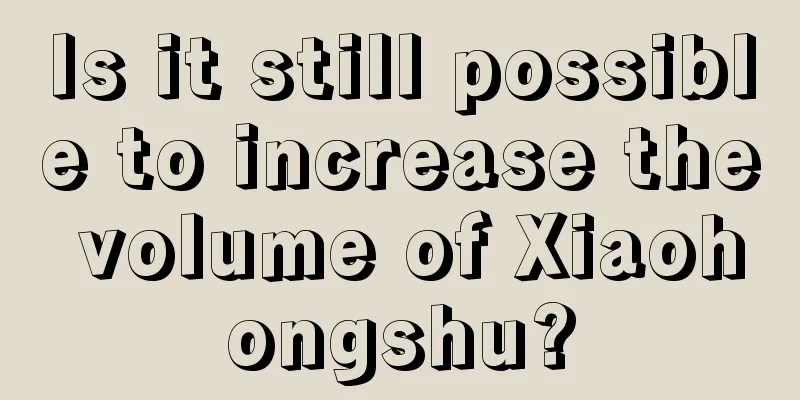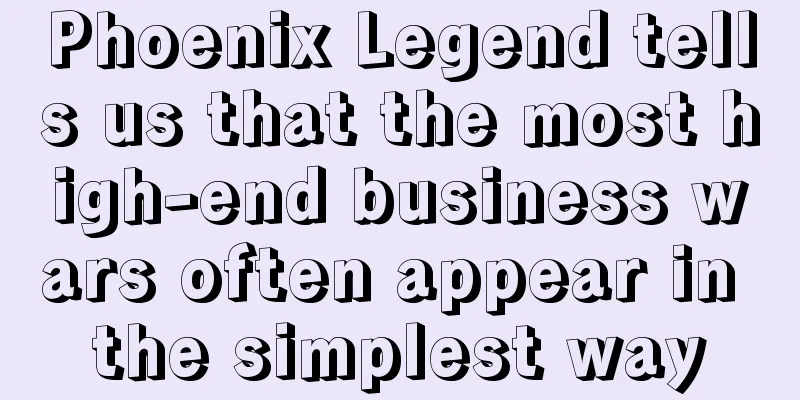Brand Setting | How does the brand concept make users perceive it?

When a brand has its own personality, preferences, characteristics and way of doing things, it should have its own attitude and cognition towards the world and life. Even if these are subjective, they will affect the formation of concepts, stories and even values in the long run. Today we will talk about how to apply the brand concept and story into practice and let users feel it after it is formed. Let me ask you a question first. Have you ever felt that concepts are vague, metaphysical, and you don’t know how to use them? In fact, it is not just you. I often see some brands describe their own concepts and feel that they are very "illusory". For example, a low-alcohol wine brand wants to convey the concept of female drinking culture. I think most people are also confused when they hear "female drinking culture". They don't know what she wants to express specifically? What is "female drinking culture"? For example, I often see many fragrance brands at creative markets describe themselves like this: they aim to explore the "atypic moments" in life with scent as a clue; they use scent to restore heart-moving moments. We believe that scent is the best carrier of memory, and we hope to record these precious and subtle scents. I can understand the attributes of the fragrance category itself, which requires a higher level of style, but often my designer friends who go to the market with me may not necessarily get what the brand wants to express, and have already " illusorily " created homogeneity. Then why do the concepts that brands have worked so hard to create make people feel "empty"? I conclude that there may be two reasons: 1. The concept is too abstract, there are as many Hamlets as there are readers There is a game called "You Act, I Guess" that is often played in variety shows. Person A looks at the word or phrase on the card, but cannot speak. Person A tells Person B through acting, and Person B tells Person C. After a round, the last person's understanding usually makes everyone laugh. Although A cannot speak when it is transmitted to B, the words and phrases generally selected in variety shows are highly recognizable and concrete, considering the audience's acceptance. Even so, the final understanding varies greatly, not to mention the abstract brand concept. The founder said it once, thinking that the core team understood it. The core team told their partners, thinking that they all understood it. But later they found that their partners’ understanding was different from that of the founder. Because no one in the team gave a detailed or further explanation or extension of the descriptions, words, etc. in the concept and story, no one was sure how to understand and express the concept and story. Therefore, one of the reasons for abstraction is that the information itself cannot be explained clearly , and errors can easily occur during the transmission process. 2. Unable to express ideas, unable to conduct secondary creation, and unable to grasp the degree, so that users feel "unreal" in the end There are indeed many brands whose concepts and stories seem ordinary, but through interpretation and expression, we and our users feel that they are good and can feel them. For example, in the concepts of many brands, you have seen similar words, " Explore a lifestyle related to XX ", and most of you will feel that it is very abstract. Everyone says this, and it is the same as saying nothing. Because it is indeed a very ordinary concept on the surface, it requires the internal team to interpret it and carry out secondary creation. So, we need to at least give the following: what scenario are you based on? What do you advocate in this scenario? How to "explore" ? To put it bluntly, what is the relationship between your philosophy and mine? Food Post is a magazine brand that I like very much. It explores the emotions and lifestyles related to food. It uses a full love for life to transform some originally very professional knowledge of food and cooking into very beautiful texts, and combines it with the local culture of various categories and regions, making you feel both professional and literary, and very readable. My own interpretation of the emotions and lifestyles explored in food posts is this: it records the people behind the creation of the food and the stories between them and the food, allowing readers to feel the creator's persistence and belief in the food, including the food creator's own lifestyle . At the same time, Shitie also invited many people who like the same kind of food to talk about the food they like and their lives. When these two objects are combined, you will feel the human touch of Shitie and the life represented by each kind of food. This is what I feel about the brand concept of Shitie. So, what should a team do if they don’t have a strong grasp of the brand concept and story, and don’t quite know how to further set up and create? The following content is the core point of this lecture. I will use a brand that wants to convey Chinese culture as an example to explain how to set the concept. Since 2018, many new brands have sensed the trend of the rise of domestic products and the revival of traditional culture, and many brands have emerged to convey their own ideas or stories: Oriental, New Chinese style, and national trend as the core expression, but most of them have gradually disappeared. I think the lack of a complete setting, so that they can't express, or express very impetuously, is one of the reasons for failure. Especially for brands whose concept is established as "culture". 1. The first thing you need to do is to calm down, go deep into the hearts of your users, and figure out the ideas and culture you want to convey. What do your users understand and like? I just happened to operate a tea beverage project with Chinese style culture before, so I have some understanding of it. Here I will take Chinese style as an example. What we call "Chinese style culture" nowadays is actually a new form of Chinese style, that is, "new Chinese style". It is not the traditional ancient books, the teachings of Confucius and Mencius, or the various schools of thought. It is equivalent to Jay Chou's Blue and White Porcelain, which is a Chinese style song, but it is a new Chinese style interpreted with modern elements. In order to further understand the users’ understanding of Chinese style culture, we infiltrated a Hanfu community , which was more active every day than all my WeChat groups. The avatars and nicknames of the group members were all in ancient style. Through group chats, we intuitively felt the daily lives of the fans and the activeness of the circle culture. In addition to joining the community, we also watched a lot of variety shows and documentaries . In a popular variety show at the time, "National Style Beauty Boy", we saw some understanding of national style. I will read it to you for your enjoyment: In this program, we saw the problems of the national style circle at that time:
Now, looking at this issue, is it just like many brands that claim to be "national trend, oriental, new Chinese style"? In fact, looking back, many brands that claim to be "lifestyle" have the same problem. What do the young people who truly like Chinese culture recognize? Come on, let’s continue digging. In the comments and comments under Douban's highly rated "National Treasure Archives" and "New Arrivals at the Forbidden City", we can see that wherever there is a deep excavation and careful treatment of traditional culture and historical background, it will receive unanimous praise from the audience. This trend is the same when you switch to costume TV series. The praise for the careful treatment of traditional objects, costumes, scenes, and language of a certain dynasty has not stopped until now. Therefore, if you want to build a brand based on traditional Chinese culture, you must first understand this culture. Why do a group of users like this culture? What do they care about? From social networks, movies, TV dramas, and documentaries, we feel that if you truly respect Chinese culture, take it seriously, and like it, you will gradually be able to integrate into it. This is the opportunity for you and your users to communicate on the same frequency. Therefore, the selection and application of all the copywriting, images, peripherals, materials, etc. used in your brand must be rigorous, and as much as possible, excerpts and quotations must have sources, so as to continuously build trust and authority for the brand. Finding out the user's understanding of this culture and concept is the first basic work to deepen the setting of brand concepts, and I think it is also the work that is most easily overlooked by brand people. 2. Next, we need to let users notice us, which means we need to interpret the concept or culture in our own way. Whether you are the first to use the national style in this category or a latecomer, you need to define your national style. Where does it come from, and what does it express and convey? What keywords can be condensed into to guide the work of the internal team? I have concluded that this definition needs to include three parts: concept/cultural definition, keywords, and cultural origin. In my experience, many teams have their own understanding, but it is not in-depth and not clearly organized enough, so that the outside world and users will feel that you are superficial or illusory. People often sit down and talk for half an hour or an afternoon. There are indeed some different understandings and consensus, but if you ask them to summarize it with a few keywords or a paragraph, they can't explain it clearly. This is easy to cause misunderstandings for other internal partners. Here I provide you with two tips to help you sort it out more clearly. 1. Use books to find the source of culture or ideas, which will help you go deeper and clarify your own ideas/cultural definitions, keywords and sources. For example, if you want to express Chinese culture, which covers a period of about 5,000 years, you must first have a target and a foundation. Is it more inclined to the literature and art of the Song Dynasty? Or is it more inclined to the diversity and openness of the Tang Dynasty? In this source, we look for cultural expressions that suit us. When choosing books, you can search for more keywords based on your cultural source. For example: architecture, humanities, art, food, etc., and select 10 books that you think are most likely to be suitable for what the brand wants to convey. The same is true for brands that want to convey a certain lifestyle. Whether you advocate nature or instant self-release, you can first collect and refine information in this field through books. Why do I recommend looking in books? Because whether it is concepts, stories, or culture, the content in books has been refined. If you just search for information online, the scope is very large and very fragmented, which is not conducive to immersive thinking. 2. When we have extracted appropriate content and cultural expressions in the book, we can combine it with the brand personality mentioned in the previous lecture, inject culture and ideas into our own personality, preferences, characteristics and ways of doing things, and gradually form the brand’s own ideas or culture. Here I use Huaxizi’s brand concept and cultural expression to help you understand. Huaxizi was born in Hangzhou. Hangzhou has always impressed us with the Jiangnan culture and the misty West Lake. The lifestyle of the whole city is also leisurely and refined. Therefore, the founding team did not want it to be a brand that moves fast, superficial and impetuous. It is also set up as a brand personality that is eloquent, carefully researched and gentle. The brand concept it wants to convey is: Oriental cosmetics, using flowers to nourish makeup. The first half of the sentence is the category and culture, and the second half is the product characteristics. The entire brand concept and cultural setting of Huaxizi are related to Hangzhou and the Song Dynasty . It can be said that its cultural source is "Eastern culture based on Hangzhou and the Song Dynasty". In this, we can find many cultural hooks. Its brand name is taken from the poem of Su Dongpo, a poet of the Northern Song Dynasty: If I want to compare West Lake to Xi Shi, heavy makeup and light makeup are always suitable. This poem actually points out Hua Xizi's national style aesthetics. Hangzhou was the capital of the Southern Song Dynasty, and the Song Dynasty reached a relatively high level in Chinese aesthetics, with simplicity, elegance, and ethereality. Hua Xizi described her own national style as follows: Hua Xizi, an oriental makeup artist, always looks good with heavy or light makeup. This sentence is a general guide. I think the following paragraph is a complete interpretation of Huaxizi's brand concept. What is Xizi? Tracing back to the East, carving ancient ways, standing on the west bank, and using modern technology to add beauty to today's women. Where does Xizi come from? Borrowing from the ancient style of the East, it comes slowly. The charm of Xizi is the collection of books, poems, and songs. The above are the definitions, keywords, and some cultural origins that Huaxizi has given to its own "East". Then, let's take a look at how it conducts creative divergence and presentation applications. Huaxizi's expression of brand concept and culture is consistent with Huaxizi's vision, language, product creativity, and communication with users. Let's interpret it bit by bit. 1. Ancient craftsmanship The products replicate the ancient palace's beauty recipes, such as peach blossom red skin cream. Its emphasis on “using flowers to make up” and the use of flowers as raw materials for cosmetics is a craft that has been around in ancient China. 2. Women are beautiful My interpretation is beauty that is generous, delicate and profound. This is reflected in Huaxizi's visual design. The window of the logo is inspired by Jiangnan gardens, which is classic and elegant. The main color of the brand is taken from the poem by Bai Juyi: "A glance back and a smile brings out a hundred charms; the beauties in the six harems are all colorless." The official explanation of powder and rouge is a little bit of powder and rouge and pink walls and black tiles. This is what Hua Xizi believes in, the oriental aesthetics and colors, and it is also the ancient portrayal of women's makeup. Hua Xizi's spokesperson, Du Juan, is actually very beautiful, intelligent and elegant. 3. With the oriental ancient style, the charm of Xizi comes from the collection of books, poems and songs. In its language, I feel the charm of antiquity and storytelling. On the details page of the e-commerce platform, there are no hawking slogans and various sales points. Instead, the characteristics and concepts of the products are expressed in ancient poems with great charm, and combined with the visual effect of e-commerce, the sense of immersion is strong. As for collecting books, collecting lyrics, and collecting music, my biggest impression is the theme song of "Hua Xizi" written by Fang Wenshan, composed by Chen Zhiyi, and sung by Zhou Shen. This oral narration may not give me a sense of immersion, so I recommend everyone to listen to it. In addition to the creativity and expression we just mentioned, Huaxizi has also well integrated its brand concept into its products. Most users' impression of Huaxizi products is: air loose powder and carved lipstick. But it has actually been launching gift box products with cultural themes, such as: making the West Lake scenery into a three-dimensional book and embedding it in the packaging. Another example is the Miao silver gift box that expresses traditional handicrafts. In addition to the cultural definitions, keywords, cultural origins, creative divergence, and presentation applications and products we mentioned above, some rules are needed to ensure that the brand concept and culture can be expressed in the team for a long time. If you are relatively familiar with Huaxizi, you will find that it has some rules or regularities in expressing its brand culture and concepts. One is the West Lake in Hangzhou, which is its origin. The beautiful scenery in the West Lake, such as Su Causeway in Spring Dawn, Broken Bridge in Snow, Leifeng Pagoda in Sunset, etc., are often used in its pictures and language. One is flowers, the raw materials of its products. Most of the descriptions of the products will mention different flowers. One is the ancient recipe. It highlights that its craftsmanship is an oriental classic, derived from history and passed down from generation to generation. Finally, it is the definition of brand aesthetics, beauty, charm and heavy makeup and light makeup are always suitable. I am not sure whether Huaxizi has such rules internally, but as an observer, I can feel that it is conveying its core concept through repeated expressions. We will stop our analysis of Huaxizi here and briefly summarize a few key points in setting the brand concept.
Well, our content is almost here. I hope you can understand through today's explanation:
Author: Shaokang loves brain burning Source: Shaokang Blake (ID: shaokang92) |
<<: How to avoid business and brand failure
Recommend
What are the cross-border e-commerce payment platforms? Introduction to the five major platforms
Now, to do cross-border e-commerce, you need to no...
The creation of urban cultural IP from the booming ice and snow tourism in Harbin
This city in northeast China has successfully deve...
What does Amazon Laobaihao mean? What are the categories?
Today I will introduce you to the content of openi...
The 9.9 yuan photo album was discontinued after a week, are the hippocampi stable now?
With the iteration of AI technology, physical phot...
How to advertise on Shopify? What are the advertising techniques?
In today's e-commerce world, Shopify has becom...
Brand is behavior
The goal of brand communication is not just to spr...
"Promise" Guo Youcai gained 10 million followers in 10 days: a grassroots internet celebrity selected by the platform's "algorithm"
This article tells the story of Guo Youcai, a gras...
Tencent's e-commerce is undergoing another "change", can Video Account handle it all?
Tencent has always been obsessed with e-commerce; ...
What qualifications are needed to engage in cross-border e-commerce? What should be prepared?
In order to expand their sales channels, merchants...
Alipay offers subsidies of over 10,000 yuan to recruit talents. Is it “taking advantage of traffic” or “new opportunity”?
Since 2022, the Alipay platform has started to upg...
Playing the Olympic card, Xiaohongshu can hardly realize its dream of becoming an "encyclopedia of life"
Xiaohongshu, as a platform with content sharing at...
What is the process of joining TradeKey? What do you mainly sell?
Today, I will introduce you to the content of open...
How will Wish develop in the future? How can I join?
As one of the world's largest mobile shopping ...
How to advertise on Amazon variants? How to advertise?
Merchants who have opened stores on Amazon should ...
Can the Tik Tok mini program only rely on short dramas?
This article deeply analyzes the latest developmen...









